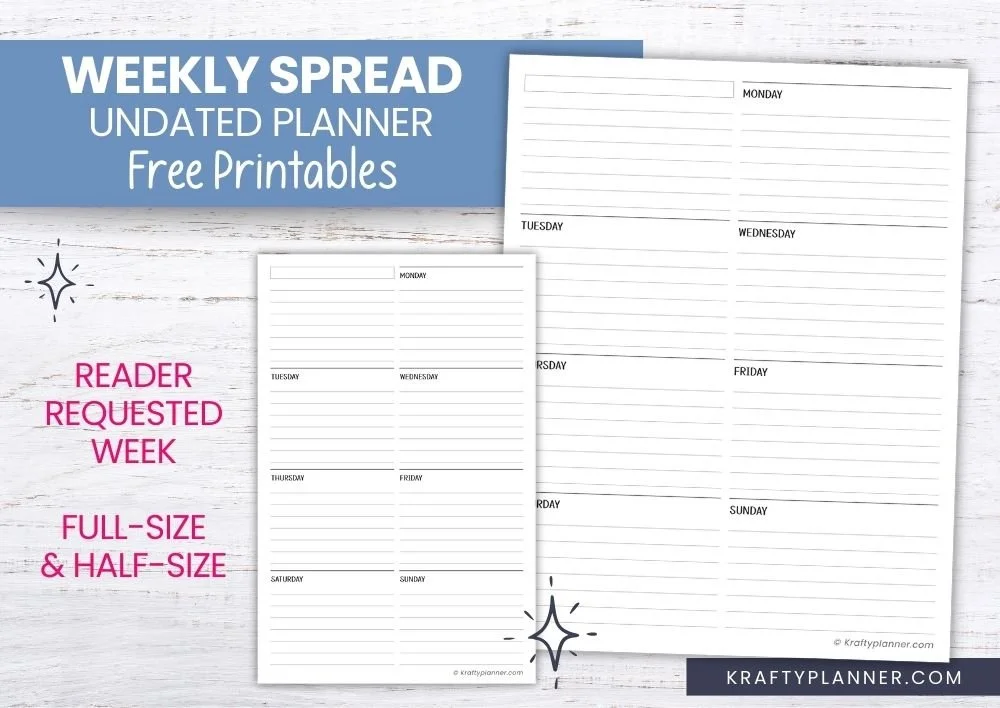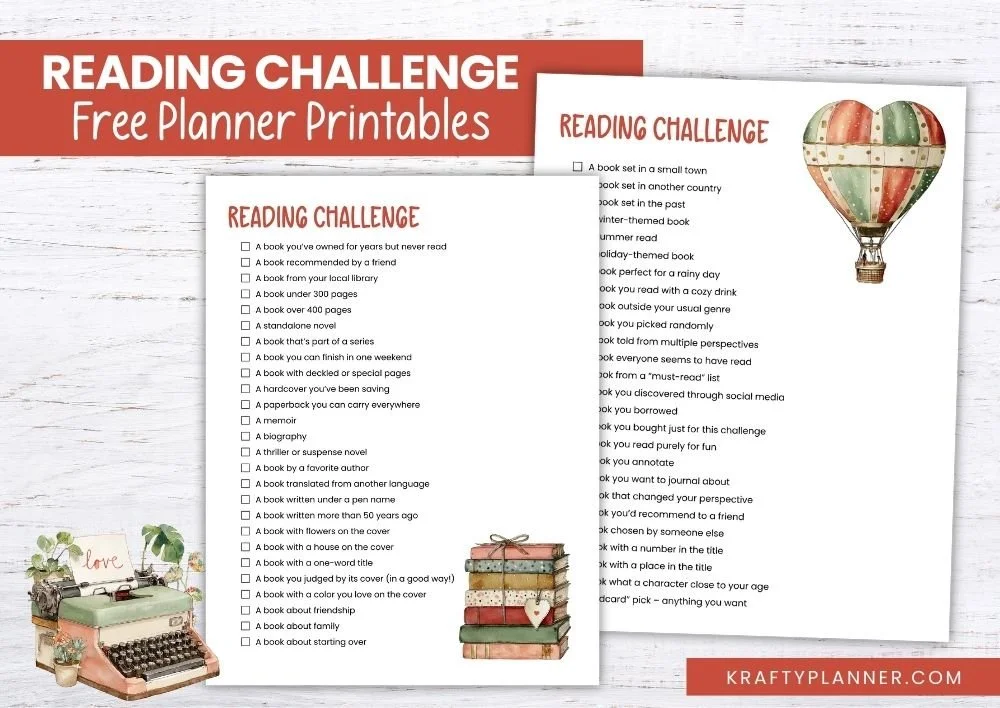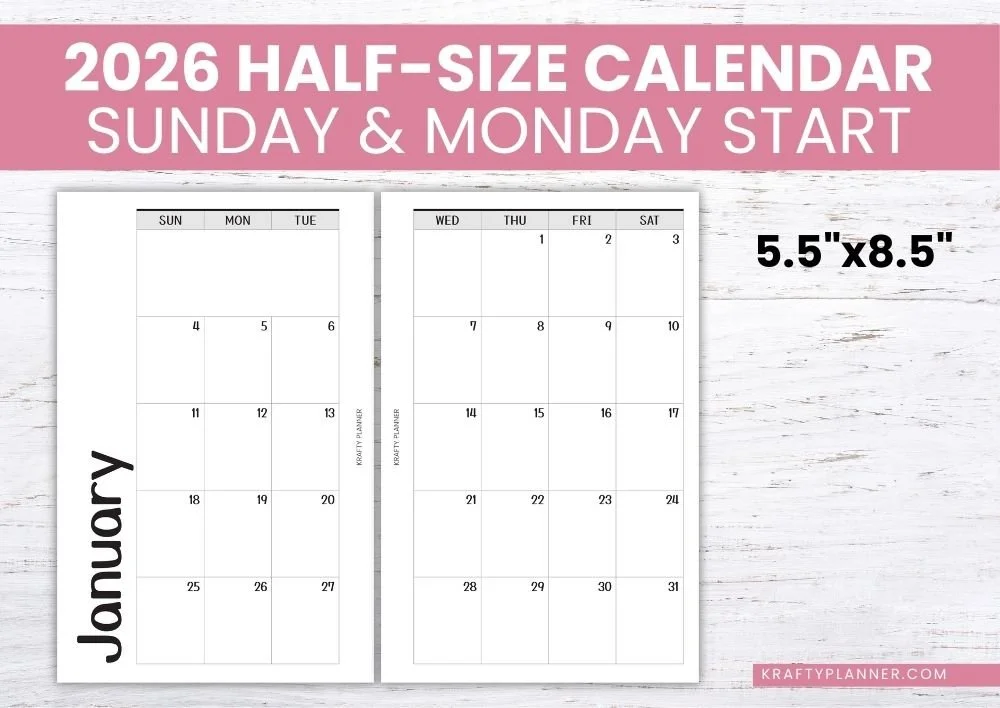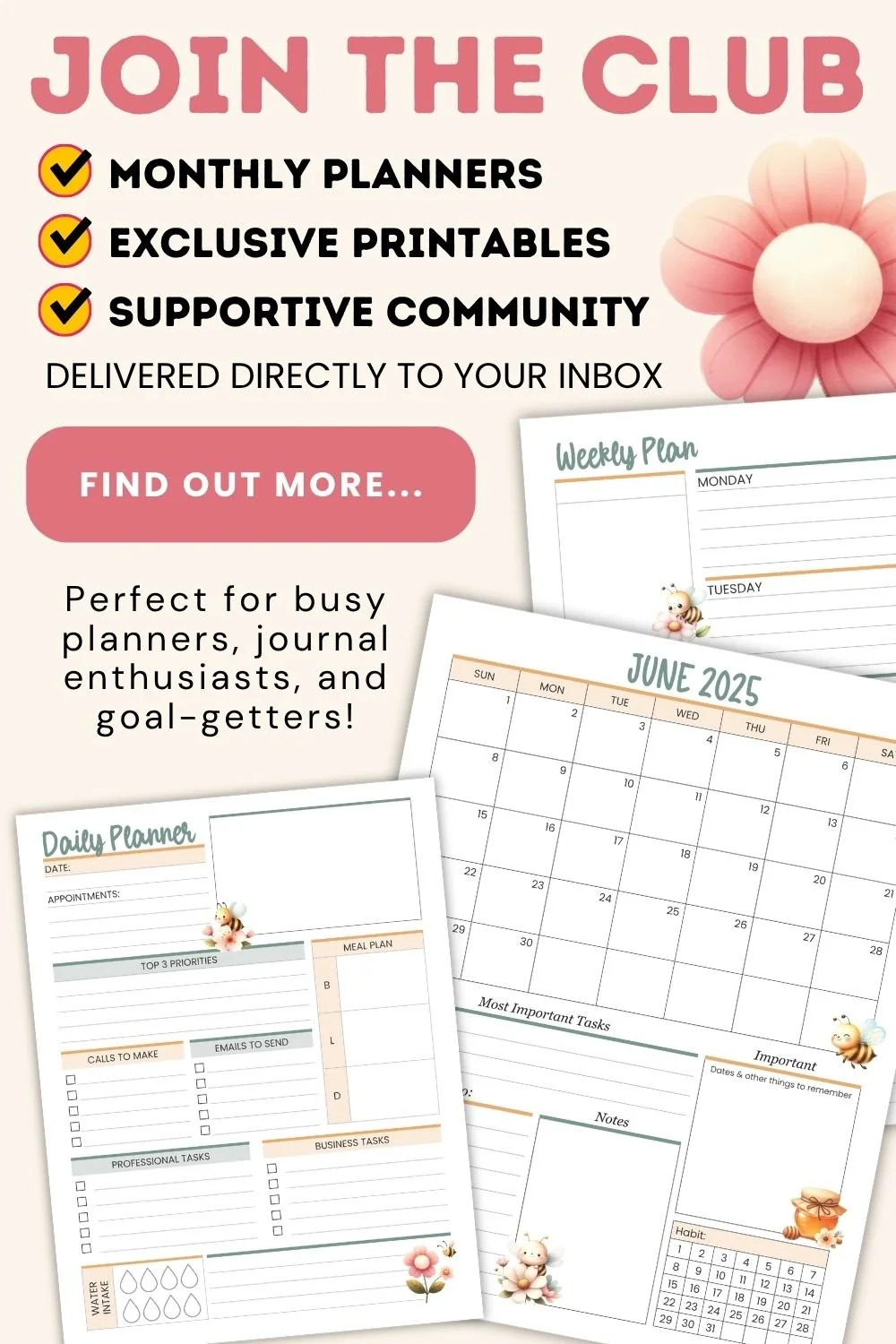6 Strategies for Daily Planning and Better Productivity
It's no secret that the world is a fast-paced place. We're constantly bombarded with new information, technology, and change.
For many of us, this pace can be overwhelming. So, when we don't take the time to plan our days, we can easily lose focus and become less productive. This can lead to even more stress and anxiety as we try to play catch-up.
Additionally, not planning our days can also lead to missed opportunities and goals.
In order to combat this, it's important to learn how to be more productive in our everyday lives. And while there are many different ways to increase productivity, one of the most important is learning how to effectively plan out each day.
Below I’ve listed 6 Strategies for effectively planning your day. Pick one method and try to stick with for at least a couple weeks to see how it works for you. If you aren’t seeing any progress or you’re not enjoying the process try something else 😀
Related post: My 10 Best Planning Tips and Tricks.
1. The Warren Buffet Strategy
This strategy has three steps:
Step 1: Write down your top twenty-five goals. These could be career goals, personal goals, weekly goals, annual goals, etc.)
Step 2: Go over your list and circle your top 5 goals. Make sure to take some time with this part; don’t rush it!
STOP – Do NOT proceed to Step 3 until you have done the two steps above first.
Step 3: Now you essentially have two lists: the circled items are List A, and the remaining items are List B. So logically the next thing to do is start on your most important tasks. Well, not exactly.
Here’s the catch – Buffet says this, “Everything you didn’t circle just became your Avoid-At-All-Costs list. No matter what, these things get no attention from you until you’ve succeeded with your Top 5.” For Step 3, you only want to focus on working on the items on List A.
Why it works:
Eliminating things you care about is the most difficult part of this productivity method. Those twenty items on List B are things you care about, just like the items on List A. They are tasks that are important to you for one reason or another.
It’s super easy to tell yourself that you’re being productive while spending time on those twenty tasks. But when you hold them up to your top five goals, those other tasks are simply distractions from your biggest goals.
Spending your limited time on secondary priorities may just be the reason you still have twenty half-completed projects instead of five finished ones.
2. The Anthony Trollope Strategy
This strategy is even more simple than the others. Trollope simply did the following:
Step 1: Set a timer for 15 minutes.
Step 2: Write 250 words before the timer goes off.
Step 3: Repeat 12 times throughout the day for a total of 3 hours.
With this simple method, Trollope completed 47 novels, 18 non-fiction books, 12 short stories, and 2 plays, in addition to multiple articles and letters.
“This division of time allowed me to produce over ten pages of an ordinary novel volume a day, and if kept up through ten months, would have given as its results three novels of three volumes each in the year…” —Anthony Trollope
Why does it work?
Anthony Trollope was an author (obviously) and writing a book is a pretty big project. It’s impossible to complete in one sitting, much less one day. So instead of tracking progress by how many books or chapters he wrote, Trollope simply aimed for 250 words in 15 minutes, multiple times a day.
This allowed him to feel accomplished and successful each day because, even though he wasn’t writing an ENTIRE book that day, he was completing 3,000 words towards the overall project daily.
Measuring progress in smaller increments helps you to keep the momentum going throughout a bigger task. And more momentum means more progress, which means even more tasks will get completed overall. This strategy applies to any big projects, not just writing ones. Think about how you can break your tasks out into highly productive, 15-minute segments throughout the day.
The quicker you finish a task and check it off of your to-do list, the faster you will feel like you are being productive and effective each day. This early win can be a crucial part of keeping your attitude upbeat and your drive going as you complete the remainder of your tasks throughout the day.
Simply put, Anthony Trollope’s strategy allows you to get the immediate payoff of finishing a task quickly as well as the long-term value that comes from working on your most important goals.
3. Newton's Laws Strategies
Newton’s First Law of Motion states this, “An object either remains at rest or continues to move at a constant velocity unless acted upon by an external force. (Objects in motion tend to stay in motion. Objects at rest tend to stay at rest.)”
We can easily apply this same principle to productivity. People at rest tend to stay at rest, but that also means that the opposite is true - people in motion tend to stay in motion.
When it comes to productivity, this means that the most important thing you can do is just get started. Once you get started it is much easier to continue.
You don’t even have to start with the intention of completely finishing the task! Need to exercise? Just start with one exercise, one repetition. You’ll find that it’s incredibly easy to do another, and another, and another. And the next thing you know, you’ll be done! Just get in motion.
Newton’s Second Law of Motion states, “The vector sum of the forces on an object is equal to the mass of that object multiplied by the acceleration vector of the object. (Force equals mass times acceleration.)”
In other words, this law means that if you want to get an object to accelerate in a particular direction, then the amount of force you apply and the direction of the said force will both have an impact.
The same is true for getting things accomplished in your life. Productivity isn’t just about how much work you put in (magnitude), but also where that work is applied (direction). You have a limited amount of force (energy); where you spend that energy matters!
And finally, Newton’s Third Law of Motion says, “When one body exerts a force on a second body, the second body simultaneously exerts a force equal in magnitude and opposite in direction on the first body. (Equal and opposite forces.)”
Your typical productivity and efficiency level is the result of the productive and unproductive forces in your life. Productive forces are things like focus, motivation, drive, and positivity.
Unproductive forces include things such as poor sleep quality, stress, poor eating habits, and overextending yourself.
In order to become more productive and efficient, you must either increase your productive force or eliminate unproductive forces. Increasing your productive force is possible, but it often results in exhaustion and burnout. The better option is to work to remove unproductive forces from your life instead.
You can do this by reducing your stress level, taking on fewer responsibilities, living a healthy lifestyle, setting appropriate boundaries, etc. It’s all about removing those obstacles that are holding you back.
4. The Essentialism Strategy
Essentialism at its core is about understanding the way you make decisions – with a slow, carefully considered “yes” or a quick, decisive “no.” It’s about recognizing all of your responsibilities and homing in on what is most essential to you.
Being more intentional about your choices will allow you to have more control over your daily life, and therefore more time and energy available for productivity.
This strategy has 5 simple steps:
Step 1: Write each task down on a separate piece of paper (like a sticky note).
Step 2: Look at everything you have written in front of you and ask yourself, “If I could only keep one of these, which would it be?” Place the chosen task’s paper face down.
Step 3: Repeat Step 2 again with the remaining tasks. Once you’ve selected one, place it face down on top on the first task you selected.
Step 4: Repeat until all the papers are in one stack.
Step 5: Flip the stack over and work from the top, as you’ve just prioritized your to-do list!
Why does it work?
Saying “yes” to everything (or making no decision at all) means giving up your choice and losing control. Your purpose is greater than just being someone else’s workhorse.
When you don’t make your own choices, you can’t work towards where you want to be, in either work or life. This often results in being overextended, stressed, frustrated, and less effective. Saying “no” more frequently can take some work, but it gets easier as you go.
5. Personal Kanban Strategy
Personal Kanban is a system based on Lean manufacturing principles but applied on a personal level. We used this system when I worked in a pump manufacturing plant so everyone could see at a glance what inventory was on order.
Personal Kanban only has two rules: make your list visual and limit your work-in-progress (WIP).
It’s a strategy that anyone can use, regardless of their situation, age, or learning style. Its visual nature is also great for those that struggle with figuring out where to begin working on tasks for the day.
Step 1: Create a board or poster with three columns: To-Do, In Progress, and Complete.
Step 2: Make a sticky note (also called a “card”) for each thing you need to complete.
Step 3: Add each sticky note to the To-Do column.
Step 4: Label each sticky note task as high, medium, or low priority
Step 5: Choose 2-3 tasks and place them in the In Progress column and get to work.
Step 6: As you complete each task, move it to the Complete column. Then take another task from the To-Do column and move it over to In Progress.
Step 7: Rinse and repeat.
Why does it work?
Personal Kanban gives you a visual system to prioritize your tasks in a way that promotes both balance and productivity.
People often overextend themselves or bounce between unfinished products, so having a visual reminder of the In Progress tasks is helpful for keeping you on track and focused.
Make sure to always move a new task into the In Progress column as you complete other tasks. This ensures that you will have a steady flow of tasks, which leads to increased productivity and effectiveness. It’s also a really great way to keep you focused on only 2-3 tasks at any given time, helping to prevent overwhelm and burnout.
6. The Attention Span & Energy Strategy (Time Blocking)
This strategy utilizes block scheduling to take advantage of your most productive times during the day. Your attention span and energy levels have a massive impact on productivity and distractibility. Focusing on harder and more time-consuming tasks during your most alert and productive hours will yield much better results.
Step 1: Evaluate your current calendar/schedule – Start by tracking how you spend your time for a week. Include every activity (even the mindless social media scrolling!) and how much time you spend on each thing.
Once you have a better idea of how you are spending your time, it will be much easier to create a new, more efficient schedule.
Step 2: Look for patterns – Review your activities from the previous week and group the tasks into categories such as meetings, creative work, email, social media, household tasks, family time, etc.
Categorize tasks based on how you feel while doing them, or how they impact your energy levels on a scale from 1 to 10. Either of those methods will work; it’s all about what makes the most sense for you.
Step 3: Organize your time blocks – Use the categorization in Step 2 to help you lay out blocks of time throughout the day.
Be sure to plan the most intensive tasks during your high-energy times. You may have to play around with the schedule to find what works best for you, but here’s an example for inspiration:
8:00-9:00 am – Check and respond to emails
9:00-10:00 am – Marketing tasks
10:00-10:15 am – Snack/walk break
10:15 am-10:45 am – Fold laundry and clean bathrooms
10:45-11:45 am – Phone calls
11:45-12:15 pm – Lunch/walk break
12:15-1:00 pm – Prep things for dinner
1:00-2:00 pm – Outsourcing check-ins/assignments
2:00-2:30 pm – Customer support tasks
2:30-3:30 pm – Graphic design work
3:30-4:00 pm – Evaluate today’s progress and create a schedule for tomorrow
Bonus Tip: Create day themes – some people find that switching gears during the day causes them to get distracted and lose focus. If that’s the case for you, try day themes instead.
Monday can be marketing day, Tuesday can be a creative workday, etc. If you choose to go this route, be sure to schedule a family/rest day as well to rejuvenate yourself.
Why does it work?
Time blocking your scheduling can be a great tool to combat procrastination. When you know you only have 30 minutes to get something done, it’s much easier to stay focused and on task.
It’s also a good way to get a better grasp of how much time it takes you to complete different tasks. We have a tendency to underestimate how long things will take to complete – using a timed schedule for a few weeks will give you a much better idea of how much time you really need to complete things.
Finally, when your schedule doesn’t allow space for mindless tasks like chatting with friends or scrolling social media, you’ll find that it’s much easier to pay attention to the task at hand.
Here are a few more planning strategies to help you effectively plan your day:
Don’t miss these productivity posts:
THE ULTIMATE LIST OF PRODUCTS, APPS, TOOLS, AND RESOURCES I USE ON A DAILY BASIS
See my Link Party Directory for a current list of blog parties I attend each week.
This post was featured at the following link parties, thank you so much for your support! ❤️
FOR PERSONAL USE ONLY – Please Read Freebies Terms of Use.
(This post may contain affiliate links. For more information, see my disclosures here.)
~ SHARE THIS POST ~
Did you like this post? Do you know someone else who might enjoy it? Please take a minute to share it on Pinterest, Facebook, or your favorite social media… Thank you!








![2026 Reader Requested Week Is Here! [Day 1: Roundup]](https://images.squarespace-cdn.com/content/v1/5c5ed55ed86cc94f34ef8b90/7197018e-a2a2-435c-8327-6dcffeac77e9/2026+Reader+Requested+Week%21+Free+Printable+Round+Up.jpg)

































